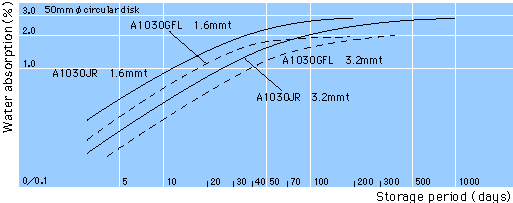UNITIKA Nylon 6
Environmental Properties
The properties of nylon resins are generally affected by the environmental factors such as humidity, heat, ultraviolet ray, and others. Here in this page, the properties of UNITIKA nylon 6 resins under a variety of environments are described.
UNITIKA nylon 6 resins have excellent resistance to chemicals.
The resistance to various chemicals is also described here.
(1) Water Absorption
Nylon resins absorb water due to the hydrophilicity inherent to the amide bonds in the resins. The equilibrium water contents vary according to the kind of polyamides and to the environmental conditions.
Relative Humidity and Water Content
The equilibrium water contents of nylon 6 resins vary according to the use conditions. In Figure 15, shown is the relationship between relative humidity and the equilibrium water contents of the resins. In estimating properties during practical use, refer to the properties of resins with the equilibrium water content under the same condition.
Figure 15. Relationship between relative humidity and the equilibrium water content of nylon 6 resins.
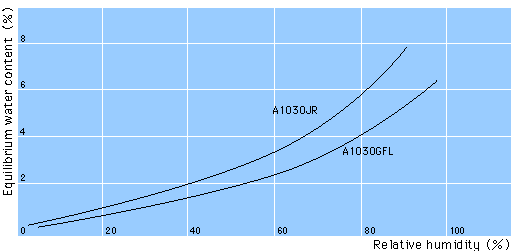
Water Absorption and Dimensional Change
Nylon 6 resins change the dimension by absorbing water. The dimensional change should be carefully taken into account in designing the parts that demand dimensional accuracy. In Figure 16, shown is the relationship between the water absorption and dimensional change.
Figure 16. Relationship between water absorption and dimensional change
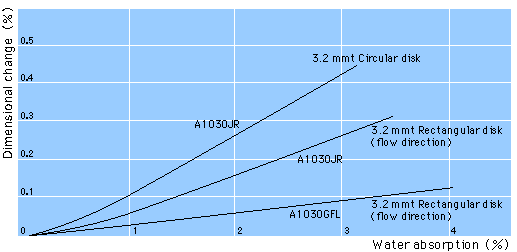
Water-Absorbing Speed
The water-absorbing speeds of Nylon 6 resins vary according to the thickness of molded pieces, temperature, and humidity. Below is shown how the water-absorbing speeds of resins with different thicknesses vary according to water temperature. The water-absorbing speed in water at 50°C is shown in Figure 17; that in water at at100°C, in figure 18; and that under 50% RH at 23°C, in Figure 19. Use these figures as reference data in performing a water-absorption treatment.
Figure 17. Water-absorption curves in water at 50°C
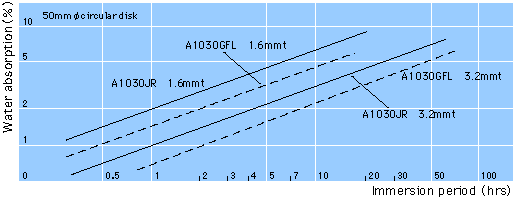
Figure 18. Water-absorption curves in water at 100°C
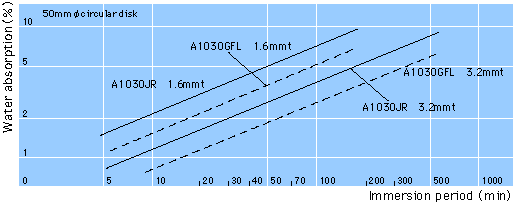
Figure 19. Water-absorption curves at 23°C under 50% RH
